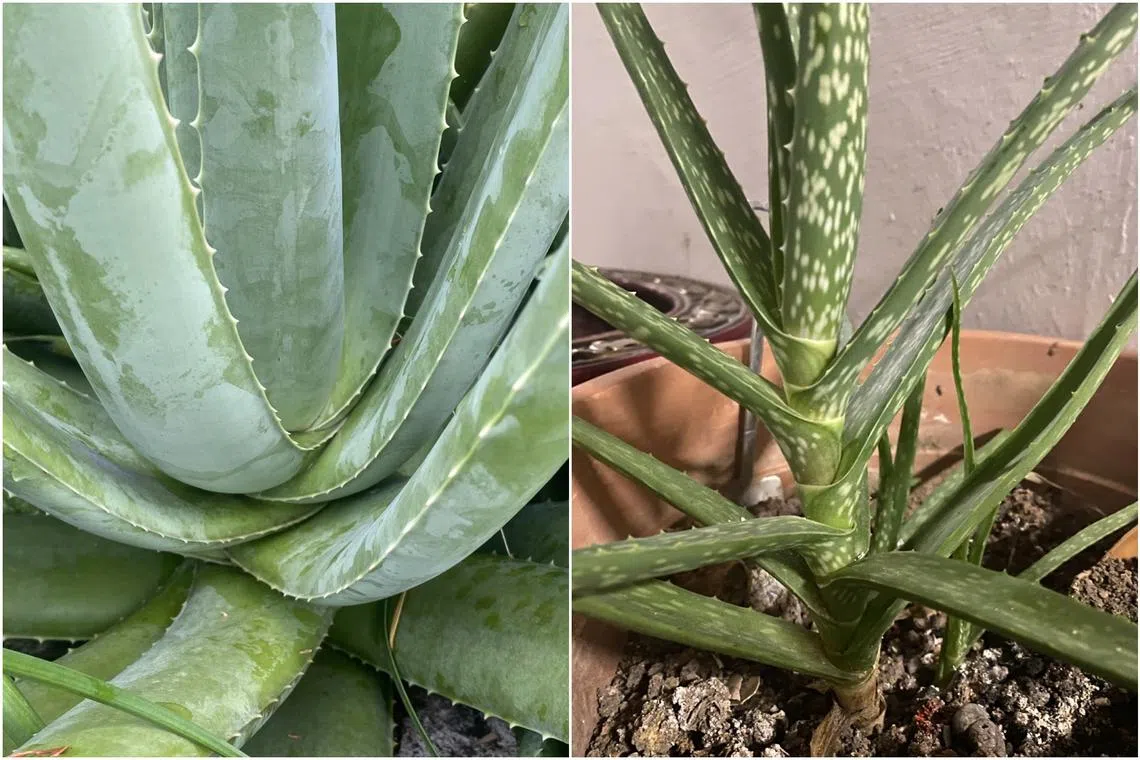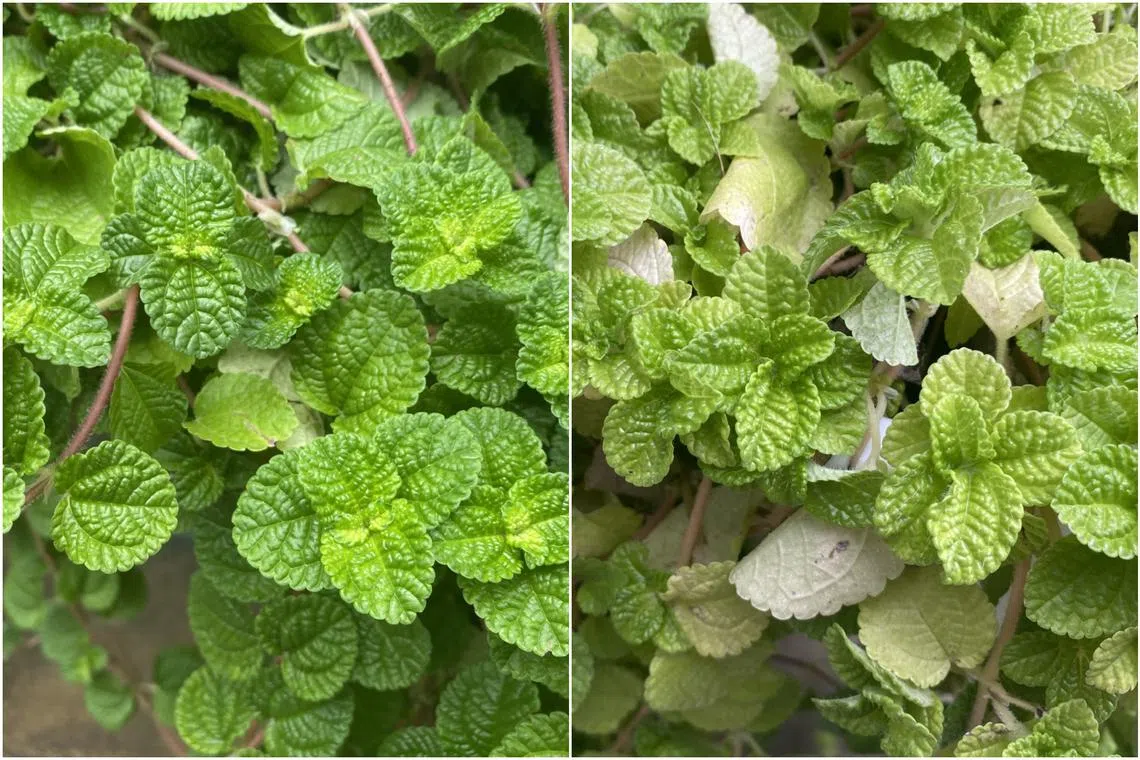Plant Parenting: Let there be light
Sign up now: Get ST's newsletters delivered to your inbox

Aloe vera needs direct sunlight to thrive. Under optimal light (left), it forms a tight rosette. Under low light (right), leaves look thin and floppy.
PHOTOS: WILSON WONG
Wilson Wong
Follow topic:
SINGAPORE – Many readers of my Root Awakening column in The Straits Times, especially those who reside in high-rise dwellings, do not have enough light for their plants to grow well.
The availability of light, put simply, encompasses both its intensity and duration of exposure. Light is vital for plants to thrive in your home garden.
Natural lighting in the form of sunlight provides energy to drive photosynthesis, a process by which plants convert water and carbon dioxide into the food necessary for its growth, development and reproduction.
Affected plants appear etiolated or stretched, and the internodal distance – that is, the leaf-to-leaf distance on the stem – increases significantly. Plant tissues become soft and tender. Flowering plants stop flowering.
Without light, plants cannot produce energy. They become vulnerable to pests and disease, and will eventually die.
Light intensity
Light intensity is how bright the light source is. It refers to the amount of light falling on a unit area.
Using your outstretched hand and a sheet of white paper, you can ascertain the intensity of light available in your garden.
If a dark and distinct shadow is cast, you have direct sunlight. With direct sunlight, you can grow many woody plants, flowering plants, several edible plants, and cacti and succulents. This is the harsh sunlight that many people shun when they are out in the open.
If the shadow is lighter with a fuzzy edge, you have filtered light, which can be likened to the gentle sunshine under a tree’s canopy. Filtered light is suitable for plants that prefer less intense sunlight, like aroids, ferns and other foliage plants.

Pilea nummulariifolia thrives under filtered light, with vivid green foliage (left). Under direct sunlight, its leaves become bleached (right).
PHOTOS: WILSON WONG
If your plant is in deep shade in the home, the shadow will be faint or non-existent – good to keep human dwellings cool, but generally not ideal for growing plants in the long term.
There is an inverse relationship between the distance from the light source and light intensity: As the distance increases, the light intensity decreases. This is why high-rise gardeners position their plants near the parapet wall of their corridor, balcony or window.
Duration of exposure to light
Few gardeners in high-rise homes have the luxury of full-day sun exposure. East-facing growing areas will have several hours of morning sun, while west-facing ones will get light from the afternoon or evening sun. The ideal daily duration of light exposure for plants in such conditions would be a continuous stretch of four to six hours.
A fully recessed balcony, window and corridor space will generally receive less light exposure than a cantilevered, exposed balcony or an open rooftop garden. The presence of sunshades will also influence the duration of light exposure.
Direction of light
Sunlight that comes through the window, balcony or corridors in high-rise dwellings typically shines in one direction. It is not uncommon to see plants in these areas growing towards their light source – a process known as phototropism.
I often joke that a high-rise gardener has to go to the opposite apartment block to admire his own flowers. Due to phototropism, plants and their flowers often grow beyond the parapet as they turn towards the sun. Gardeners may find it useful to rotate their plants regularly for balanced growth.
Most people know the sun rises in the east and sets in the west. Contrary to popular belief, the sun’s trajectory or path varies over the course of a year. From March to September, the sun is in the north-west direction, and in the south-west direction from September to March.
As such, there will be growing areas that experience full shade at certain times of the year. You can download an app for a better idea of the sun’s direction.
You should also not discount the fact that during the rainy season, plants will not get much natural sunlight.
What to do when you just do not have enough light
If your beloved plant’s current location does not have sufficient light for it to thrive, you need not fret.
With rapidly advancing LED technology, you can use grow lights for your indoor plants, even those positioned deep within your home or office.
However, some technical know-how is still needed to select the right light spectrum for the desired plant growth and behaviour, which will be covered in a future article.
Plant Parenting is a new series about houseplant care and other gardening essentials.
Dr Wilson Wong is an NParks-certified practising horticulturist and parks manager. He is the founder of Green Culture Singapore and an adjunct assistant professor (Food Science & Technology) at the National University of Singapore.

